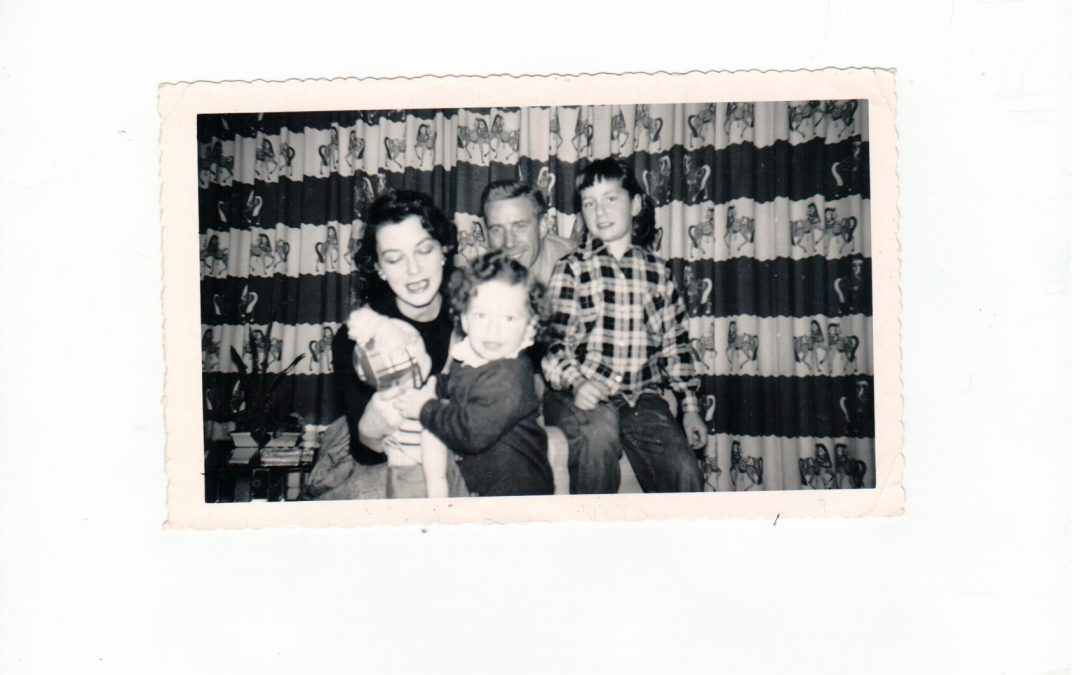
by Mindy Fried | Jun 10, 2016 | aging, connections with people, engaged aging, family, feminism, gender, health care, House Un-American Activities Committee, making choices, resiliency, theatre, Uncategorized, work and family balance
In this interview, Gayle Sulik, Founder of the Breast Cancer Consortium and Co-Founder of Feminist Reflections, talks with Mindy about her new book, Caring for Red: A Daughter’s Memoir (Vanderbilt University Press, forthcoming, Summer, 2016).
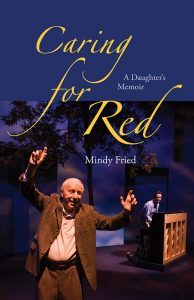 GAYLE: Mindy Fried, your new book Caring for Red tells a story of you and your sister taking care of your 97-old father in the last year of his life in an assisted living facility. Before we talk about your experience caring for your dad, Manny, tell me a little about him. Who was this colorful character? After all, he earned the nickname “Red.” Sounds fiery to me!
GAYLE: Mindy Fried, your new book Caring for Red tells a story of you and your sister taking care of your 97-old father in the last year of his life in an assisted living facility. Before we talk about your experience caring for your dad, Manny, tell me a little about him. Who was this colorful character? After all, he earned the nickname “Red.” Sounds fiery to me!
MINDY: My father was a person with many lives. As a young man, he was a labor organizer for the United Electrical Workers union where he organized factory workers. That was when industrial labor was still predominantly based in the US, and not in third world countries where labor is cheaper. At some point, he joined the Communist Party. I’m not sure how active he was or for how long, but certainly at that time, being considered a “Communist” was tantamount to being a terrorist in our current political climate. In1954, when I was around 4 years old, he was subpoenaed to testify in front of the House Un-American Activities Committee (HUAC), a very traumatic experience for him, and for my whole family. He was “blacklisted”, meaning that when he applied for jobs, he was turned away. Eventually, he was hired by a Canadian company where he sold life insurance for around 15 years. That’s the kind of work he did through much of my childhood. But he was also writing plays based on his experience as a labor organizer, and he returned to the theatre as an actor, something he had done years before. When I was a teenager in the 1960s, he was subpoenaed by HUAC again. That was tough, but times had changed quite a bit and the ramifications weren’t quite as dire as they were the first time around. He ended up going back to school when he was in his 50s. Really impressive, since he had only one year of college under his belt. He went straight from finishing an undergraduate degree to working on a Ph.D. in English. His final career was as an English professor at SUNY Buffalo State College. You might say that nothing kept this guy down. He was a great role model in that sense.
GAYLE: How did your family survive the impact of the McCarthy period?
MINDY: I grew up with two people who were angry with each other often, but it was quiet anger. That was hard. I was lucky to have a best friend who moved in down the street from me when I was 5 years old, and her family basically adopted me. She liked my house because it was quiet, and I liked hers because it was lively and warm and loving. She became my “non-bio” sister, as we say; we’re still close today. Her parents became surrogate parents, and I am ever-grateful for that. They were just very attentive; my parents were often distracted. It was great to have another family a few doors down the street. That was one way I coped. But as a family, we also believed that my father made the right choices, in how he challenged HUAC, and continued to stand up for his beliefs. Having a sense of doing the right thing goes a long way.
GAYLE: Another name associated with Manny Fried, is “Morrie.” Six years before your father died, he played the character MORRIE in a play called Tuesdays with Morrie. As the story goes, a University graduate visits his former mentor, a sociologist who is slowly dying of a progressive disease. You write that your father inhabited that role fully, and that it helped to bring you closer together. Tell me why.
Well first of all, it was a big deal to play Morrie, not only because it was a great opportunity for my father, but also because he got to perform at the Studio Arena Theater, which had blacklisted him for many years. For me, the other exciting thing about him getting this role was that Morrie was a sociologist in my own department at Brandeis University. I knew Morrie, and the moment that my dad got the part, I saw it as an opportunity for the two of us to connect around his preparation and performance. I introduced him to Gordie Fellman, one of Morrie’s closest friends and colleagues from Brandeis. And I introduced him to a couple of Buddhists and sociologists who called themselves “Monday’s with Morrie”, as opposed to Tuesdays with Morrie (upon which the book and play were based). We also watched the Frontline TV series that Ted Koppel produced about Morrie, where Koppel interviewed him over the period of time as he was dying of ALS. When my dad came to visit me, he would have these meetings, and he would run his lines with me, and he would practice a grapevine dance from the play in my narrow hallway. It was just this really sweet thing that we connected around, and then obviously I always went to see him when he acted, so it was great to see him in the play, and he really did a beautiful job. People are always kind of amazed when they see old people function in any way, but seeing him excel at inhabiting this character – I think it was a really powerful experience for the audience and he pulled it off; he did a great job.
GAYLE: In your book, you describe a father who was loving – someone you felt deeply close with – but also a man who was full of himself. Did you feel resentment about taking care of him in this last year of his life?
MINDY: Well I think that this a really important question because as adult children, many of us have mixed feelings about our parents. The answer is “no”, I didn’t resent him. But it took me many years to understand him, to find equal footing with him, to find my voice with him, since he was a forceful speaker, sometimes controlling, and sometimes discounting of opinions that differed from his. He once told me that if I wasn’t sure about something, just guess, and that 99% of the time I’d be right. I was in my 30s when he gave me this advice, and by then I had his “number” and realized that this was sort of ridiculous. But he actually believed he was right most of the time! That said, I had deep respect for him and for his values and choices in life. He centered my world, for many years. In “exchange theory”, as it applies to families and relationships, the notion is that parents care for their children in one period of time, and later in life, when elder parents need support, children care for their parents. When it came time to care for my father, I did it with all my heart.
GAYLE: How did the father-daughter relationship change as Manny aged?
MINDY: My father and I were very close. Like most people, he was a flawed human being. He made serious choices in his life that impacted our family. But I had a deep respect for him, and we had a lot in common politically. For me, being part of the Women’s Movement in the 70s helped me better understand that despite being a good guy who was committed to social justice, he was pretty “old school”. I got frustrated with what a poor listener he was, and how I often had to fight for “air time” in conversations with him. But I did learn how to argue and debate because of him. I believe he felt I could be anyone or anything I wanted to be. And while he wasn’t comfortable “having or expressing feelings”, he was emotionally raw much of his life. That was one effect of McCarthyism on his life, and I understood that about him. Over the years, I understood enough of who he was to accept his shortcomings and his vulnerabilities and to just kind of let it go and say, “ok, here’s this person in the last bit of his life,” and to really be as fully present for him without losing myself.
GAYLE: You chronicle in your book many attempts, successful and unsuccessful, to find a place for your father to live that would meet his growing care needs AND offer the kind of life that fulfilled him. This was not easy, and sometimes your father was less than helpful. Tell me what worked, and what didn’t?
MINDY: I think one thing that worked was that I put myself in his shoes. For example, when we went and visited this super groovy retirement community that was connected to a college and he said to me, “there is absolutely no way I am going to move in there”. I imagined myself living with people that we met with, and I thought “I couldn’t do that either, this would be kind of horrible”. Not that they were bad people; it just felt foreign. These weren’t people he would choose to be friends with. I think that probably the most important thing as somebody gets older is to respect where they’re coming from. And I think it’s important to start thinking about these issues early on because you know, if you are trying to make a decision when it’s dire, the whole process of decision making is much more rife with emotion. I believe that talking about these things before you are in a crisis really makes a huge difference. And that helped us a lot.
GAYLE: Your father lived in Assisted Living for the final year of his life. Am I correct?
MINDY: Even though the book uses a one-year time frame, it was actually a year and a half that my sister and I cared for our father. It worked really well, until it didn’t. We learned what assisted living was able to provide for him as well as its limitations. Ultimately, in the last few months, he needed round the clock care. But he was able to live and die in his small apartment in assisted living. As an ethnography, Caring for Red provides a real sense of life in assisted living, the norms and values that drive human interaction, the hierarchy of staff, and the structures that define the experience within this institutional form of care that aims to provide a home-like environment.
GAYLE: Can you describe what Assisted Living is?
MINDY: Well, people think of it as kind of a hybrid health and home service, but in fact it’s really just more home than health oriented. It’s a place to live; there are regular meals; there often are activities; and staff provide services to residents – up to a point. Some assisted living facilities have medical staff; others don’t. We chose a place that had some nursing care, including medical people who delivered medications, and there was actually a doctor, a geriatrician, who came by once a week. But we had to pay for medical care because it was beyond the basic services offered. We ended up supplementing even more services in order to avoid having to send him to a nursing home. But that’s a longer story…
GAYLE: You were also a long-distance caregiver. How did you manage your father’s care from afar?
MINDY: I was lucky that I had a sister to do this with, so between the two of us we shared the caregiving work. We visited every weekend; we talked on the phone all the time; and we were on the phone constantly with caregivers, as well as his friends to help arrange his social life.
GAYLE: What do you hope for your book? How do you hope people will be affected by reading it?
MINDY: I guess if nothing else, I’d like it to contribute to a more open conversation about the trials and tribulations of caregiving work. While Caring for Red includes references to scholarly work on caregiving, I will be lucky if people feel more of a heart connection to the issues, particularly those people who are caring for an elder parent. We all have a range of feelings towards the people who cared for us when we were young. It’s important to recognize that there are a lot of people who love their parents; there are some people who hate their parents; and there are some people who have mixed feelings about their parents. Taking care of them in those final throes of life is jarring; AND it’s an opportunity to reconcile unresolved feelings; it’s an opportunity to treat elder parents with dignity and to make that last piece of life worth living. It’s also something that we’re all going to face at some point so I think that how we care for our parents is also a role model for how the younger people around us can – and hopefully will – care for us.
There’s no ultimate how-to book on caring for our parents. We all learn by what we see around us. So I’d like a dialogue to be stimulated about these issues. Because it’s very hard work – unpaid caregiving labor – and people don’t talk about this shit because it’s like, ‘oh it’s too depressing’, but hey, it’s life! We’re all going to die, you know, and somebody’s hopefully going to take care of us, so let’s think about how we want that to look within families and within society.
I also hope that academics will use this book in classes on aging, on death and dying, and on anything related to the life course. Moreover, Caring for Red is an ethnography, “set” in assisted living, so I hope it will be used in methods classes. And finally, for those who take interest in the history of facism and particularly, in the McCarthy era, the book presents quite a story, which I believe we must not lose.
GAYLE: Thank you, Mindy Fried. The deeply moving and insightful memoir – “Caring for Red”- is available for pre-order on Amazon.com.
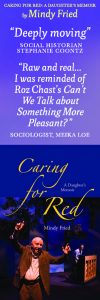

by Mindy Fried | Jun 2, 2016 | Uncategorized
Beginning today, I will be “going home” to Mindy’s Muses, a blog that I created over five years ago. Over past two years, I have had the honor of writing for Feminist Reflections (FR). I began as a Guest Author, having been invited to share a few posts from Mindy’s Muses. Then one of the FR Founders, Gayle Sulik, and I decided to collaborate on a series of posts about Black Lives Matter, because we felt it was important to write about how white allies could support this movement. After a relatively short run as a “Guest” on FR, I was invited to join as a Contributing Author, one of five writers who churn out provocative essays weekly. Mindy’s Muses went on an unofficial “semi-hiatus”.
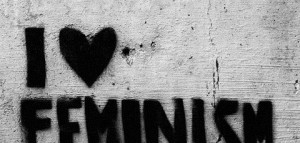 Being a member of FR has strengthened my understanding of the challenges of “doing public sociology” for academic Sociologists. Because I’m an Applied Sociologist and don’t work in academia, I don’t have pressure to publish in peer reviewed journals, nor do I have constraints on what I write about, other than those I self-impose (!). I have been inspired by my academic colleagues who navigate these demands, and maintain a commitment to reaching an audience beyond academia.
Being a member of FR has strengthened my understanding of the challenges of “doing public sociology” for academic Sociologists. Because I’m an Applied Sociologist and don’t work in academia, I don’t have pressure to publish in peer reviewed journals, nor do I have constraints on what I write about, other than those I self-impose (!). I have been inspired by my academic colleagues who navigate these demands, and maintain a commitment to reaching an audience beyond academia.
Over the past year, FR experienced some turnover, as a few of its Founders moved on. Tristan Bridges and I became Co-Chairs of the Editorial Board, and in that role, I learned more about the logistics necessary to maintain the hum of weekly posts by a variety of authors. We also added two new writers: Kristen Barber and Tressie McMillan Cottom. I can truly say that being a part of FR has been exhilarating. I love reading drafts of essays by my “FRiends” (or “FRolleagues”!), and providing feedback and editing advice. I continue to be in awe of their talent and it’s exciting to discover whatever new essay they publish. And I deeply value their feedback on my work.
Being part of a “writing group” is a different animal than writing solo, as I had been doing with Mindy’s Muses. When I consider what I want to write for FR, my thoughts are thread through a feminist lens that weaves the personal and the political. I know that my fellow FR writers are available for feedback on potential topics as well as on drafts. Writing for Mindy’s Muses is a little scarier and also maybe a little freer. While my writing style generally brings a feminist sociology lens to issues that I face personally, I also allow myself, at times, to write pieces that are just “stories”. Unlike FR, it’s on me if a post doesn’t fly. And while I can reach out to friends to read a draft, it’s more of a favor than an implicit “obligation” or commitment that comes with being part of a group.
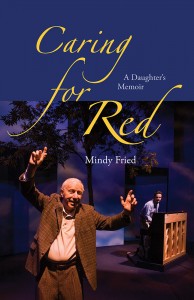 So with all this said, it is with a feeling of gratitude that I have decided to take a “sabbatical” from FR. I am thrilled to say that I have a new book coming out this summer: Caring for Red: A Daughter’s Memoir (Vanderbilt University Press). I will return to writing for Mindy’s Muses, which has just moved to a new website on WordPress called www.mindyfried.com. For now, the focus of the blog will have a broad lens – which is care work scholarship – as I feature the important research and writing of some of my colleagues, both in the US and Canada. The blog – still called Mindy’s Muses – will also provide a platform to write about my own experiences vis a vis Caring for Red, and will include excerpts of the book, lists of author readings (including Seattle on August 21st at 3PM at the Eliot Bay Book Company!), and more.
So with all this said, it is with a feeling of gratitude that I have decided to take a “sabbatical” from FR. I am thrilled to say that I have a new book coming out this summer: Caring for Red: A Daughter’s Memoir (Vanderbilt University Press). I will return to writing for Mindy’s Muses, which has just moved to a new website on WordPress called www.mindyfried.com. For now, the focus of the blog will have a broad lens – which is care work scholarship – as I feature the important research and writing of some of my colleagues, both in the US and Canada. The blog – still called Mindy’s Muses – will also provide a platform to write about my own experiences vis a vis Caring for Red, and will include excerpts of the book, lists of author readings (including Seattle on August 21st at 3PM at the Eliot Bay Book Company!), and more.
My plan, ultimately, is to provide platform on the blog portion of the website – once my book is out this summer – for other people to share their experiences, thoughts, fears and resources about caregiving for elder parents. My story – as I tell it in Caring for Red – is a universal one, and I hope that my book provides a portal for others to share their stories as well.
THANK YOU to my esteemed FR colleagues: Kristen Barber, Amy Blackstone, Tristan Bridges, Tressie McMillan Cottom, Meika Loe, Trina Smith and Gayle Sulik! It has been a pleasure working with you, and I look forward to continued opportunities in the future. I am still here to run by an idea or read a draft! And finally, a big thanks to Jon Smajda and Letta Wren Page from The Society Pages, who have been fantastic to work with on the technical side of FR business.

by Mindy Fried | May 20, 2016 | Uncategorized
 My friend’s daughter, Zoe, came home from school one day and told her dad about something that happened in school. She was in 8th grade at the time, and a trainer had just come to her class to conduct a session on sex ed. She and a boy were asked by the trainer to stand in the front of the room and hold two sides of a plastic heart together. One side was blue; the other pink. You can guess which side Zoe was asked to hold. The trainer then told them to pull the heart apart. When the two pieces of plastic were separated, the trainer told the class, “This is what happens when you have sex before marriage. Your heart is broken”.
My friend’s daughter, Zoe, came home from school one day and told her dad about something that happened in school. She was in 8th grade at the time, and a trainer had just come to her class to conduct a session on sex ed. She and a boy were asked by the trainer to stand in the front of the room and hold two sides of a plastic heart together. One side was blue; the other pink. You can guess which side Zoe was asked to hold. The trainer then told them to pull the heart apart. When the two pieces of plastic were separated, the trainer told the class, “This is what happens when you have sex before marriage. Your heart is broken”.
 When Zoe got home that day, she told her dad about it and said that it was “kind of ridiculous…stupid”. But she also felt weird about it. And so did her dad. He reached out to other parents he knew at the school, and what ensued – once the word got out – was a year-long campaign to identify who ran the program, how they got into the school in the first place, and ultimately, how to get rid of them. We discovered that the program was run by a non-profit organization called Healthy Futures, which claims it is “dedicated to empowering adolescents to avoid the health, social, and psychological consequences of risky decisions by equipping students with the tools and educated support system they need to make healthy choices”. Their services included – and continue to include – classroom-based education, peer education through after-school and summer programs, parent education workshops, school and community connections, and web-based resources. But when we dug deeper, we discovered that Healthy Futures was an abstinence-only-until-marriage (AOUM) program that was part of a larger entity in Massachusetts called A Woman’s Concern. Healthy Futures is considered “the intervention side” of this larger entity. Neither the website for Healthy Futures or A Woman’s Concern indicate a connection between these two groups. That can be found on a Christian website, listing them as a volunteer opportunity. The mission statement for A Woman’s Concern’s mission is as follows:
When Zoe got home that day, she told her dad about it and said that it was “kind of ridiculous…stupid”. But she also felt weird about it. And so did her dad. He reached out to other parents he knew at the school, and what ensued – once the word got out – was a year-long campaign to identify who ran the program, how they got into the school in the first place, and ultimately, how to get rid of them. We discovered that the program was run by a non-profit organization called Healthy Futures, which claims it is “dedicated to empowering adolescents to avoid the health, social, and psychological consequences of risky decisions by equipping students with the tools and educated support system they need to make healthy choices”. Their services included – and continue to include – classroom-based education, peer education through after-school and summer programs, parent education workshops, school and community connections, and web-based resources. But when we dug deeper, we discovered that Healthy Futures was an abstinence-only-until-marriage (AOUM) program that was part of a larger entity in Massachusetts called A Woman’s Concern. Healthy Futures is considered “the intervention side” of this larger entity. Neither the website for Healthy Futures or A Woman’s Concern indicate a connection between these two groups. That can be found on a Christian website, listing them as a volunteer opportunity. The mission statement for A Woman’s Concern’s mission is as follows:
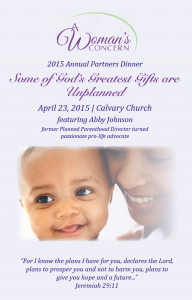 A Woman’s Concern is a Christian mission to women and couples in pregnancy distress, especially those considering abortion due to lack of information and support, and dedicated to providing life-saving help in a life-changing way. To this end we provide competent and caring services that include free pregnancy tests, sonograms, peer counseling and intervention, on-going support and referrals, parenting preparation classes, post-abortion healing and opportunities to learn about healthy sexual values, mature relationships and how to establish a vital relationship with Jesus Christ and His Church.
A Woman’s Concern is a Christian mission to women and couples in pregnancy distress, especially those considering abortion due to lack of information and support, and dedicated to providing life-saving help in a life-changing way. To this end we provide competent and caring services that include free pregnancy tests, sonograms, peer counseling and intervention, on-going support and referrals, parenting preparation classes, post-abortion healing and opportunities to learn about healthy sexual values, mature relationships and how to establish a vital relationship with Jesus Christ and His Church.
I was in shock. What was a fundamentalist Christian program doing in a public school? And for the next year, I was obsessed with understanding more about this organization and its values, as well as learning about the different approaches to sexuality education. I wanted to understand where Healthy Futures – sponsored in stealth-like fashion by A Woman’s Concern and brought into my daughter’s school – fit along the spectrum of sexuality education curriculum.
The Case against abstinence-only-until-marriage programs
According to the 35-year-old national program, Advocates for Youth, there are a number of reasons abstinence-only-until-marriage (AOUM) programs don’t work. Of the eleven states that have evaluated the impact of AOUM programs, none have demonstrated a reduction in teen sexual activity. One strategy of these programs is have teens make a “virginity pledge”, promising to remain virgins until marriage. Researchers found that despite their promise, some “pledgers” engage in risky oral or anal sex, and if they do end up having vaginal intercourse, they don’t use condoms. According to researchers, Hannah Brückner and Peter Bearman, even if virginity pledges help some young people delay sexual activity for up to 18 months, once they break their pledge, they are less likely to use contraception or condoms, which puts them at risk for unintended pregnancy and HIV or other STDs.
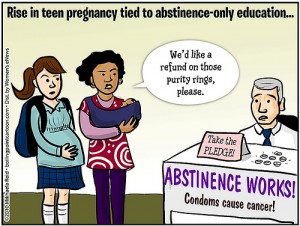 AOUM programs often contain lies and inaccurate information. A 2004 report about AOUM programs says that over 80% of federally-funded AOUM programs contain false information about the effectiveness of contraceptives, claiming that condoms aren’t effective in preventing sexually transmitted diseases and pregnancy. AOUM programs also contain false information about the risks of abortion, with one curriculum claiming that 5% to 10% of women who have legal abortions will become sterile, will be more at risk for giving birth later on to a child with mental retardation, and that tubal and cervical pregnancies are increased following abortions. AOUM curricula blurs religion and science, presenting “as scientific fact the religious view that life begins at conception”. One curriculum calls a 43-day-old fetus a “thinking person”. And AOUM curricula “treat stereotypes about girls and boys as scientific fact”. The report concludes that these programs are a colossal waste of federal taxpayers’ dollars.
AOUM programs often contain lies and inaccurate information. A 2004 report about AOUM programs says that over 80% of federally-funded AOUM programs contain false information about the effectiveness of contraceptives, claiming that condoms aren’t effective in preventing sexually transmitted diseases and pregnancy. AOUM programs also contain false information about the risks of abortion, with one curriculum claiming that 5% to 10% of women who have legal abortions will become sterile, will be more at risk for giving birth later on to a child with mental retardation, and that tubal and cervical pregnancies are increased following abortions. AOUM curricula blurs religion and science, presenting “as scientific fact the religious view that life begins at conception”. One curriculum calls a 43-day-old fetus a “thinking person”. And AOUM curricula “treat stereotypes about girls and boys as scientific fact”. The report concludes that these programs are a colossal waste of federal taxpayers’ dollars.
The major clearinghouse on sexuality education in the US – The Sexuality Information and Education Council of the United States (SIECUS), says AOUM programs are “based on fear and shame, inaccurate and misleading information, and biased views of marriage, sexual orientation and family structure.”
The case for comprehensive sexuality education
According to SIECUS, comprehensive sex education provides students with “medically accurate information about the health benefits and side effects of all contraceptives, including condoms, as a means to prevent pregnancy and reduce the risk of contracting STIs, including HIV/AIDS”. It teaches young people “the skills to make responsible decisions about sexuality, including how to avoid unwanted verbal, physical, and sexual advances”, as well as how “alcohol and drug use can effect responsible decision making”. Students are provided with the tools to make informed decisions. While these programs stress the value of abstinence, they also prepare students for when they become sexually active.
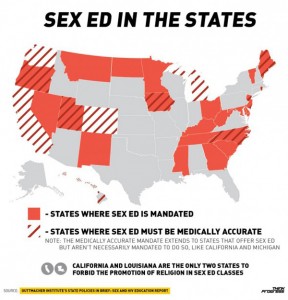 A series of studies show that the lessons learned in comprehensive sex education programs are critical for healthy decision making during the teen years and beyond. When teens are educated about condoms and have access to them, they’re more likely to use them. When teens practice contraception in their first sexual relationship, they’re more likely to keep doing so, compared to those who used either no method or used a method inconsistently. In fact, a 86% decline in teen pregnancy from 1995 to 2002 is attributed by Columbia University researchers to dramatic improvements in contraceptive use. Only 14% of the decline in teen pregnancy rates was attributed to a decrease in sexual activity.
A series of studies show that the lessons learned in comprehensive sex education programs are critical for healthy decision making during the teen years and beyond. When teens are educated about condoms and have access to them, they’re more likely to use them. When teens practice contraception in their first sexual relationship, they’re more likely to keep doing so, compared to those who used either no method or used a method inconsistently. In fact, a 86% decline in teen pregnancy from 1995 to 2002 is attributed by Columbia University researchers to dramatic improvements in contraceptive use. Only 14% of the decline in teen pregnancy rates was attributed to a decrease in sexual activity.
Researchers Starkman and Rajani found that one-half of HIV infections in the US and two-thirds of all sexually transmitted diseases (STD) occur among young people under the age of 25. By the end of high school, nearly two thirds of American youth are sexually active, and one in five has had four or more sexual partners. Nonetheless, they say, “Despite these alarming statistics, less than half of all public schools in the United States offer information on how to obtain contraceptives and most schools increasingly teach abstinence-only-until-marriage (or ‘abstinence-only’) education”.
A Short history of Abstinence-only–until marriage programs
 Over the past few decades, the federal government has poured millions of tax-payer dollars into AOUM programming. The two main federal funding streams for AOUM programs were the Community-Based Abstinence Education grant program and the AOUM portion of the Adolescent Family Life Act. Funding for these unproven programs expanded from 1996 until 2006, particularly during the Bush Administration. Between 1996 and federal Fiscal Year 2010, Congress allocated over $1.5 billion tax-payer dollars into AOUM programs and a significant amount of funding CONTINUES today!
Over the past few decades, the federal government has poured millions of tax-payer dollars into AOUM programming. The two main federal funding streams for AOUM programs were the Community-Based Abstinence Education grant program and the AOUM portion of the Adolescent Family Life Act. Funding for these unproven programs expanded from 1996 until 2006, particularly during the Bush Administration. Between 1996 and federal Fiscal Year 2010, Congress allocated over $1.5 billion tax-payer dollars into AOUM programs and a significant amount of funding CONTINUES today!
Interestingly, President Bill Clinton’s “welfare reform” bill, signed into law in 1996, included a provision for AOUM programs. This funding, created via Title V, Section 510(b) of the Social Security Act, represented a shift from promoting pregnancy prevention programs to promoting abstinence from sexual activity outside of marriage, at any age. Sex was to be “confined to married couples”, and abstinence from sexual activity outside of marriage became the “expected standard for all school-age children”; with the “exclusive purpose (of) teaching the social, psychological, and health gains to be realized by abstaining from sexual activity”. In other words, these programs could not – still cannot – discuss, much less advocate for the use of contraceptives, except to focus on their failure rates. AOUM programs are meant teach that sexual activity outside of the context of marriage is likely to have “harmful psychological and physical effects”, and that it’s important for people to “attain self-sufficiency before engaging in sexual activity.”
After decades of federal support for a number of these programs, the Obama Administration and Congress eliminated the two main funding streams for AOUM programs. Congress allowed the third funding source, the Title V AOUM program, to expire on June 30, 2009. But this program was unfortunately revived as part of the health care reform package, which continues to provide $50 million a year in mandatory funding to this very day!
Power of the parents…
After discovering the AOUM program at our school, a core of parents initially gathered together and we drew up a petition, calling for the school to remove Healthy Futures and demanding comprehensive sexuality education. The support for the petition was phenomenal. Hundreds of parents signed it! Our main concern was our children’s health. We felt that it was inappropriate for a fundamentalist Christian organization, such as A Woman’s Concern, to be brought into our school. And we didn’t like the sneaky way the school had chosen to bring this program into the school. We also wanted to know how Healthy Futures had come to our school in the first place. To our surprise, we discovered that the school’s Vice Principal had brought them. He claimed that a parent referred him and that he had no knowledge of the group’s affiliation.
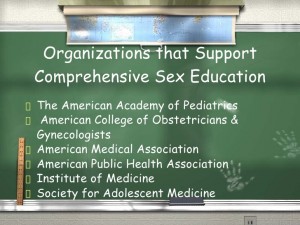 We presented a statement to the school administration, accompanied by a list of over 140 organizations that support comprehensive sexuality education in public schools, stating the following:
We presented a statement to the school administration, accompanied by a list of over 140 organizations that support comprehensive sexuality education in public schools, stating the following:
We are concerned that the Healthy Futures curriculum is driven by a very narrow viewpoint and provides inaccurate information regarding the viability of condoms as protection against STDs and unwanted pregnancies. The (school system) has a comprehensive sexuality education curriculum that has served the system well for many years…We believe that it is in the interests of the community served by the (school system) to be given full access to the comprehensive sexuality education curriculum established by the (XX) Public Schools.
We went to dozens of meetings – with parents and administrators – where we presented data on AOUM and comprehensive sexuality education, and we demanded that the Assistant Principal be held accountable. Under duress, he promised to review other options for the following year. We also demanded that parents and students be included in any assessment of alternative options. A number of the parent teacher meetings were very tense, because parents – particularly those who were fundamentalist Christian and anti-abortion – felt personally offended that we were organizing to get rid of this program. We let them know that we respected their points of view, but that a religiously-affiliated program didn’t belong in a public school.
 In the end we won! After all our wrangling with the school administration, we realized that we needed to take it one level up, to the School Committee, who shared our shock that a religiously affiliated program had snuck into the school. We also presented our case to the Superintendent of the school district, and as it turned out, his wife was on the Board of Planned Parenthood. Within weeks, the program was eliminated from the district!
In the end we won! After all our wrangling with the school administration, we realized that we needed to take it one level up, to the School Committee, who shared our shock that a religiously affiliated program had snuck into the school. We also presented our case to the Superintendent of the school district, and as it turned out, his wife was on the Board of Planned Parenthood. Within weeks, the program was eliminated from the district!
With this victory, parents continued to be active in a number of other school-based activities. So, not only were we successful in removing AOUM programming; we also invigorated parent engagement in the school, which spilled over to other efforts to improve the school. I was asked to be on a Sexuality Education Curriculum Committee for the school system, and spent the next year reviewing curriculum which would be brought into the schools. We ended up selecting Planned Parenthood’s excellent comprehensive sexuality education curriculum.
To date, 23 states have rejected Title V abstinence-only federal funding, including: Alaska, Arizona, California, Colorado, Connecticut, Delaware, District of Columbia, Idaho, Iowa, Kansas, Maine, Massachusetts, Minnesota, Montana, New Jersey, New Mexico, New York, Ohio, Rhode Island, Vermont, Virginia, Wisconsin, and Wyoming. This is progress, but the fight isn’t over for other states and school districts. There’s still work to do…
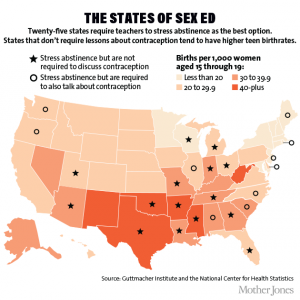
 Being a member of FR has strengthened my understanding of the challenges of “doing public sociology” for academic Sociologists. Because I’m an Applied Sociologist and don’t work in academia, I don’t have pressure to publish in peer reviewed journals, nor do I have constraints on what I write about, other than those I self-impose (!). I have been inspired by my academic colleagues who navigate these demands, and maintain a commitment to reaching an audience beyond academia.
Being a member of FR has strengthened my understanding of the challenges of “doing public sociology” for academic Sociologists. Because I’m an Applied Sociologist and don’t work in academia, I don’t have pressure to publish in peer reviewed journals, nor do I have constraints on what I write about, other than those I self-impose (!). I have been inspired by my academic colleagues who navigate these demands, and maintain a commitment to reaching an audience beyond academia. So with all this said, it is with a feeling of gratitude that I have decided to take a “sabbatical” from FR. I am thrilled to say that I have a new book coming out this summer: Caring for Red: A Daughter’s Memoir (Vanderbilt University Press). I will return to writing for Mindy’s Muses, which has just moved to a new website on WordPress called www.mindyfried.com. For now, the focus of the blog will have a broad lens – which is care work scholarship – as I feature the important research and writing of some of my colleagues, both in the US and Canada. The blog – still called Mindy’s Muses – will also provide a platform to write about my own experiences vis a vis Caring for Red, and will include excerpts of the book, lists of author readings (including Seattle on August 21st at 3PM at the Eliot Bay Book Company!), and more.
So with all this said, it is with a feeling of gratitude that I have decided to take a “sabbatical” from FR. I am thrilled to say that I have a new book coming out this summer: Caring for Red: A Daughter’s Memoir (Vanderbilt University Press). I will return to writing for Mindy’s Muses, which has just moved to a new website on WordPress called www.mindyfried.com. For now, the focus of the blog will have a broad lens – which is care work scholarship – as I feature the important research and writing of some of my colleagues, both in the US and Canada. The blog – still called Mindy’s Muses – will also provide a platform to write about my own experiences vis a vis Caring for Red, and will include excerpts of the book, lists of author readings (including Seattle on August 21st at 3PM at the Eliot Bay Book Company!), and more.

 GAYLE: Mindy Fried, your new book Caring for Red tells a story of you and your sister taking care of your 97-old father in the last year of his life in an assisted living facility. Before we talk about your experience caring for your dad, Manny, tell me a little about him. Who was this colorful character? After all, he earned the nickname “Red.” Sounds fiery to me!
GAYLE: Mindy Fried, your new book Caring for Red tells a story of you and your sister taking care of your 97-old father in the last year of his life in an assisted living facility. Before we talk about your experience caring for your dad, Manny, tell me a little about him. Who was this colorful character? After all, he earned the nickname “Red.” Sounds fiery to me!










